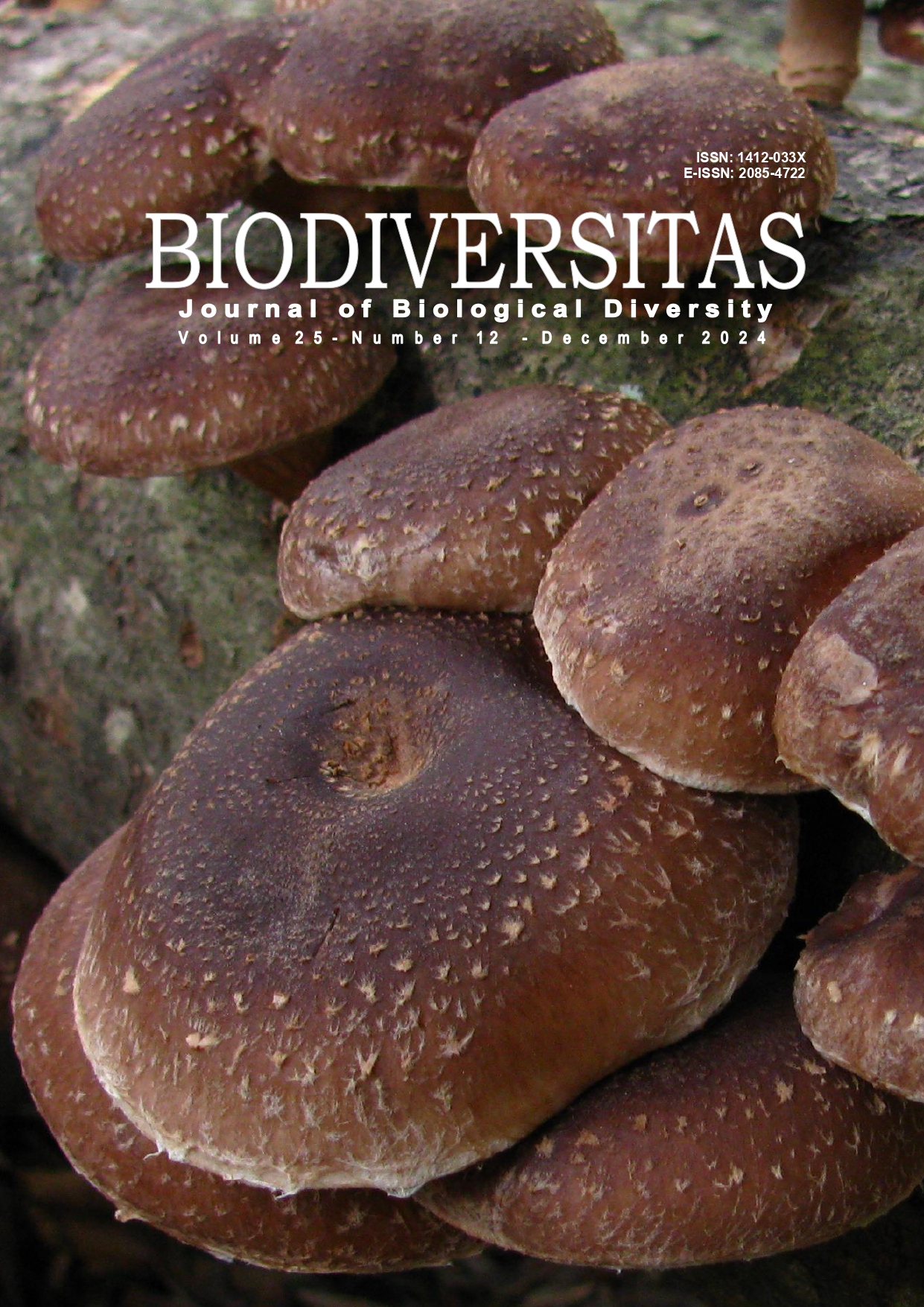Impact of subsistence hunting on the diversity of wildlife species in the Amazonian Andes of Northeastern Peru
##plugins.themes.bootstrap3.article.main##
Abstract
Abstract. Coronel-Castro E, Meza-Mori G, Torres-Guzmán C, Oliva-Cruz M, Pariente-Mondragón E, Sopla-Tafur R, Barboza E, Amasifuen Guerra CA. 2024. Impact of subsistence hunting on the diversity of wildlife species in the Amazonian Andes of Northeastern Peru. Biodiversitas 25: 4816-4828. This study examines the impact of subsistence hunting on wildlife diversity in the northeastern Amazonian Andes of Peru, where hunting is a crucial activity for the food and livelihoods of rural communities. Fieldwork was conducted in 25 communities, where 1,027 residents were interviewed to identify the species hunted, the motivations behind this practice, and the impact of hunting on species population abundance. A total of 53 hunted species were recorded (24 birds and 29 mammals), with notable orders including Carnivora, Columbiformes, and Rodentia. Species diversity was assessed using diversity indices, and community clustering was analyzed, revealing a high diversity of hunted species. In two communities, Omia and Primavera, hunting was fairly evenly distributed among various species. In comparison, in Lonya Grande and Nuevo Tingo, we found a concentration of hunting on a few species, potentially leading to the overexploitation of these populations. Additionally, communities were categorized into two main hunting groups based on ecosystem and elevation. Principal component analysis revealed that species such as majaz (Cuniculus taczanowskii) and venado gris (Odocoileus virginianus) are hunted primarily for food, while others, such as loro choclero (Psittacara mitratus), are hunted for conflict with humans. Moreover, there was a widespread perception of the declining abundance of hunted species, indicating the pressure that subsistence hunting places on local wildlife. These findings highlight the need for collaborative, sustainable management strategies to conserve wildlife in this ecoregion, emphasizing the role of the entire community in this crucial effort.

